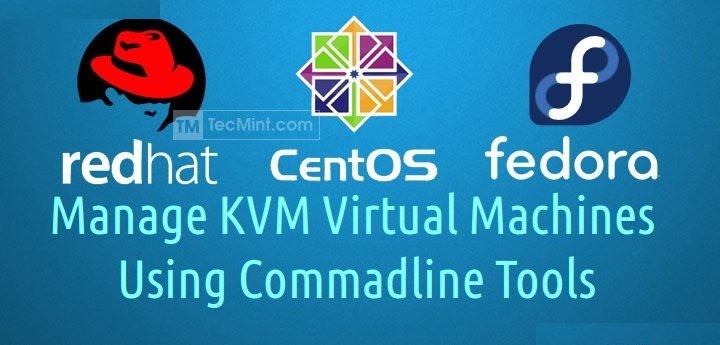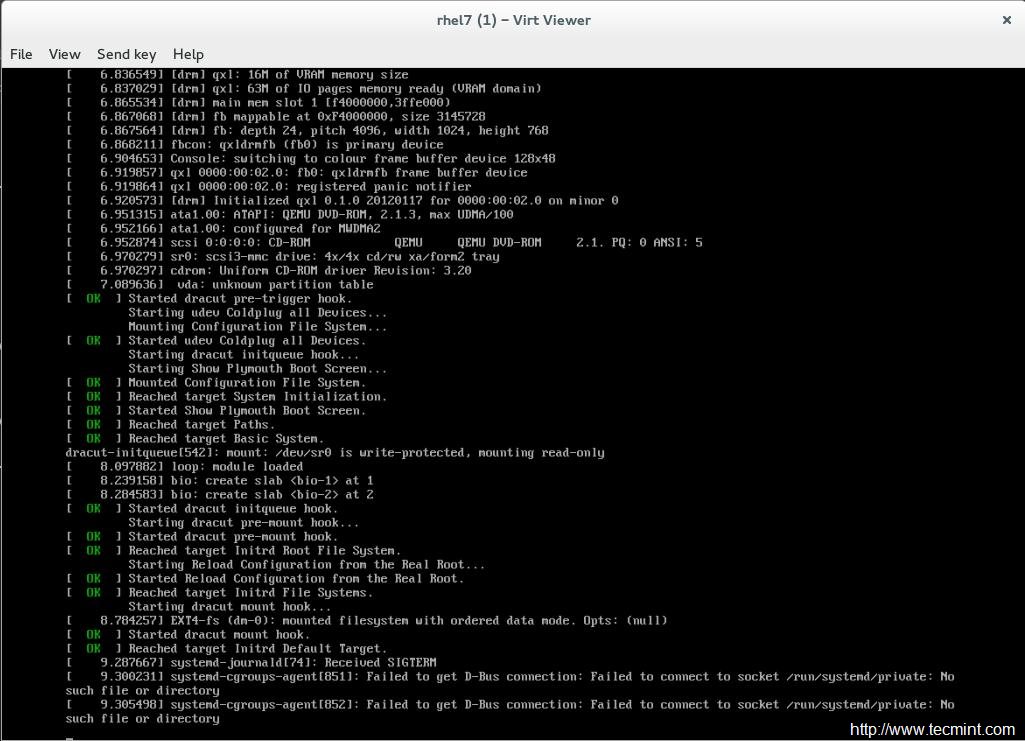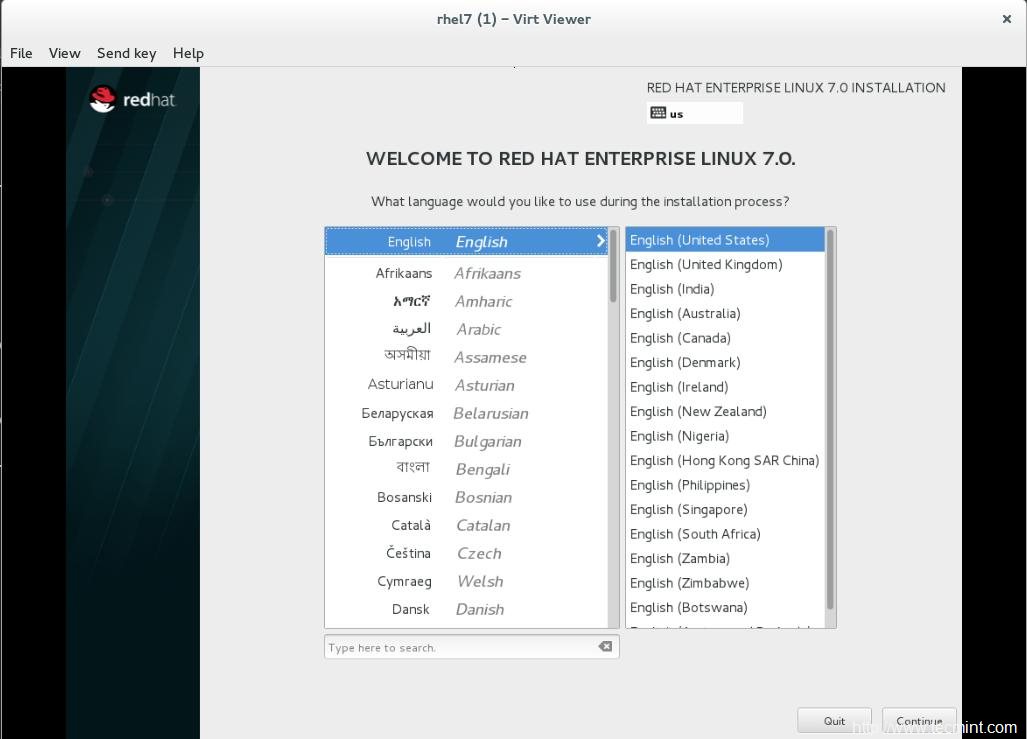2015-03-16 14:23:43 +08:00
如何在Linux中用命令行工具管理KVM虚拟环境
2015-03-02 16:47:26 +08:00
================================================================================
2015-03-23 17:59:31 +08:00
在我们[KVM系列专题][1]的第四部分, ‘ ’ ,
2015-03-02 16:47:26 +08:00

2015-03-23 17:59:31 +08:00
Linux系统的KVM管理
2015-03-02 16:47:26 +08:00
2015-03-23 17:59:31 +08:00
在这篇文章里没有什么新的概念,我们只是用命令行工具重复之前所做过的事情,也没有什么前提条件,都是相同的过程,之前的文章我们都讨论过。
2015-03-02 16:47:26 +08:00
2015-03-23 17:59:31 +08:00
### 第一步: 配置存储池 ###
2015-03-02 16:47:26 +08:00
2015-03-23 17:59:31 +08:00
Virsh命令行工具 CLI tool is a management user interface for managing virsh客户域 guest domains. The virsh program can be used either to run one command by giving the command and its arguments on the shell command line.
2015-03-02 16:47:26 +08:00
In this section, we will use it to create storage pool for our KVM environment. For more information about the tool, use the following command.
# man virsh
**1. Using the command pool-define-as with virsh to define new storage pool, you need also to specify name, type and type’
In our case, name will be Spool1, type will be dir. By default you could provide five arguments for the type:
- source-host
- source-path
- source-dev
- source-name
- target
For (Dir) type, we need the last argumet “target” to specify the path of storage pool, for the other arguments we could use “-” to unspecific them.
# virsh pool-define-as Spool1 dir - - - - "/mnt/personal-data/SPool1/"

Create New Storage Pool
**2. To check the all storage pools you have in the environment, use the following command.**
# virsh pool-list --all

List All Storage Pools
**3. Now it’
# virsh pool-build Spool1

Build Storage Pool
**4. Using the virsh command pool-start to active/enable the storage pool we have just created/built above.**
# virsh pool-start Spool1

Active Storage Pool
**5. Check the status of environment storage pools using the following command.**
# virsh pool-list --all

Check Storage Pool Status
You will notice that the status of Spool1 converted to active.
**6. Configure Spool1 to start by libvirtd service every time automaticlly.**
# virsh pool-autostart Spool1

Configure KVM Storage Pool
**7. Finally lets display information about our new storage pool.**
# virsh pool-info Spool1

Check KVM Storage Pool Information
Congratulations, Spool1 is ready to be used lets try to create storage volumes using it.
### Step 2: Configure Storage Volumes/Disk Images ###
Now it is disk image’
# man qemu-img
**8. We should specify the qemu-img command “create, check,….etc”, disk image format, the path of disk image you want to create and the size.**
# qemu-img create -f raw /mnt/personal-data/SPool1/SVol1.img 10G

Create Storage Volume
**9. By using qemu-img command info, you could get information about your new disk image.**

Check Storage Volume Information
**Warning**: Never use qemu-img to modify images in use by a running virtual machine or any other process; this may destroy the image.
Now its time to create virtual machines in the next step.
### Step 3: Create Virtual Machines ###
10. Now with the last and latest part, we will create virtual machines using virt-istall. The virt-install is a command line tool for creating new KVM virtual machines using the “libvirt” hypervisor management library. For more details about it, use:
# man virt-install
To create new KVM virtual machine, you need to use the following command with all the details like shown in the below.
- Name: Virtual Machine’
- Disk Location: Location of disk image.
- Graphics : How to connect to VM “Usually be SPICE”.
- vcpu : Number of virtual CPU’
- ram : Amount of allocated memory in megabytes.
- Location : Specify the installation source path.
- Network : Specify the virtual network “Usually be vibr00 bridge”.
# virt-install --name=rhel7 --disk path=/mnt/personal-data/SPool1/SVol1.img --graphics spice --vcpu=1 --ram=1024 --location=/run/media/dos/9e6f605a-f502-4e98-826e-e6376caea288/rhel-server-7.0-x86_64-dvd.iso --network bridge=virbr0

Create New Virtual Machine
**11. You will find also a pop-up virt-vierwer window appears to communicate with virtual machine through it.**

Booting Virtual Machine

Installation of Virtual Machine
2015-03-16 14:23:43 +08:00
### 结论 ###
2015-03-02 16:47:26 +08:00
This is the latest part of our KVM tutorial, we haven’
- [KVM Getting Started Guide][2]
- [KVM Virtualization Deployment and Administration Guide][3]
--------------------------------------------------------------------------------
via: http://www.tecmint.com/kvm-management-tools-to-manage-virtual-machines/
作者:[Mohammad Dosoukey][a]
2015-03-16 14:23:43 +08:00
译者:[ZTinoZ](https://github.com/ZTinoZ)
2015-03-02 16:47:26 +08:00
校对:[校对者ID](https://github.com/校对者ID)
本文由 [LCTT ](https://github.com/LCTT/TranslateProject ) 原创翻译,[Linux中国](http://linux.cn/) 荣誉推出
[a]:http://www.tecmint.com/author/dos2009/
[1]:http://www.tecmint.com/install-and-configure-kvm-in-linux/
[2]:https://access.redhat.com/site/documentation/en-US/Red_Hat_Enterprise_Linux/7/html/Virtualization_Getting_Started_Guide/index.html
2015-03-16 13:56:17 +08:00
[3]:https://access.redhat.com/site/documentation/en-US/Red_Hat_Enterprise_Linux/7/html/Virtualization_Deployment_and_Administration_Guide/index.html